Migrants cope with freezing weather, violence on Hungary border
Violent and illegal pushbacks of asylum seekers by Hungarian authorities are reported on the rise at the Serbian border.
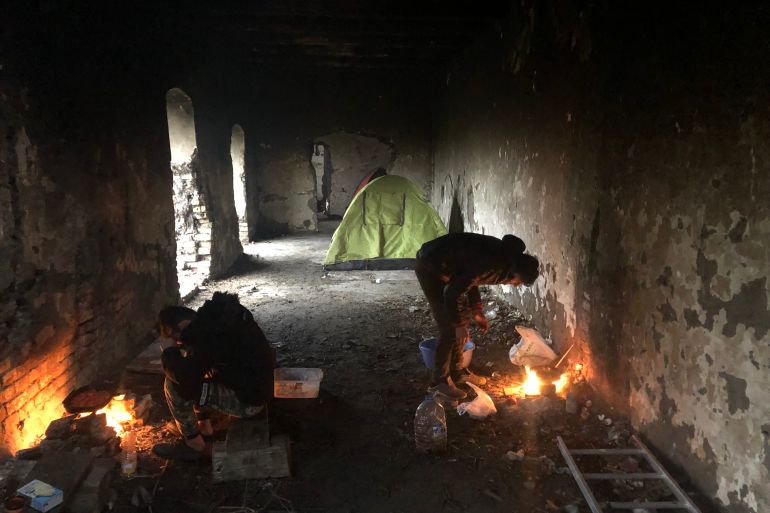
Horgoš, Serbia – A few dozen men are clustered around the small red truck that is parked in the open field.
The temperature is near freezing just outside the Serbian village of Horgoš, near the Hungarian border, and the men are huddled together to ward off the cold.
Keep reading
list of 3 itemsGuatemalan migrants face soaring costs amid crises at home
Migrants fleeing Lebanon by sea accuse Greece of abuse
As they wait for their phones to be charged by the rumbling portable generator, some take turns shaving with an electric razor that is being passed around.
The truck belongs to an NGO that twice a week distributes clothing and small packets of food to the refugees, and today a volunteer medical student has joined.
There is almost no access to medical care for migrants here, and 10 men are lined up in front of her, waiting.
Some of the complaints – skin rashes, headaches, gastric issues – are consequences of the poor nutrition and hygiene, while others are the direct result of violence.
A young Moroccan named Adel with a bruised and swollen face complains about dizziness and buzzing in his ears. He says he was severely beaten by Hungarian police three days earlier.
“They tied my hands behind my back and forced me to the ground,” he says. “They began to beat me by kicking me. In my face, my back, my stomach … They beat me and beat me.”
Adel is one of hundreds of men and women who are sheltering in northern Serbia, attempting to cross into Hungary.
The Balkan Route
They are on the last stretch of the so-called Balkan Route, which begins in Turkey, goes through Bulgaria or Greece and winds its way through various former republics of Yugoslavia.
The route made headlines at the height of the refugee crisis in 2015, when it was the primary path to Germany and other countries in Western Europe for about one million refugees.
In 2016, however, two factors caused the number of asylum seekers along the route to plummet: the EU-Turkey deal, which stopped most of the migration from Turkey to Greece, and the closing of their borders to migrants by several countries along the route.
Hungary, with one of the EU’s most virulently anti-refugee governments – President Viktor Orbán has gone on record labelling asylum seekers Muslim invaders and a poison – has played a significant role in this decline.
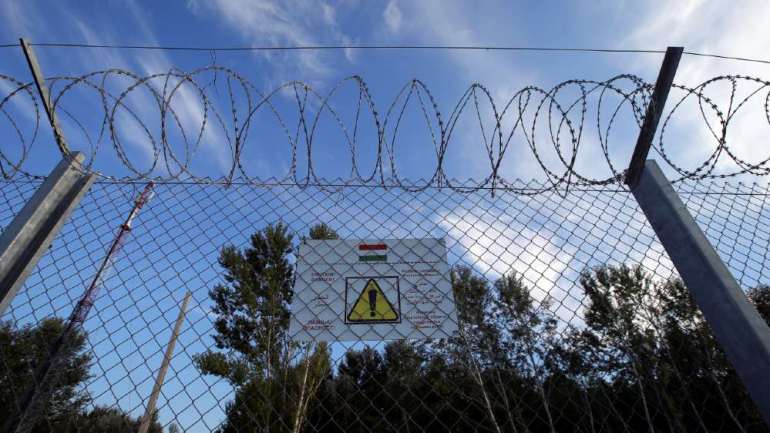
In late 2015, it completed a razor-wire fence along its border with Serbia, and in 2016 it became the bloc’s only country with a law in which pushbacks – the practice of pushing asylum seekers back across borders without due process – have been declared legal.
In the last three years, the number of migrants on the route – although not close to the levels of 2015 – has begun to rise once again, in part due to the recent takeover of Afghanistan by the Taliban armed group.
According to Frontex, the EU border patrol agency, the number of irregular crossings fell from 764,033 in 2015 to 5,869 in 2018 and then rebounded to 60,541 in 2021.
As a consequence of Hungary’s policies, hundreds of asylum seekers are stranded in areas of Serbia close to its border with Hungary.
Majdan shelter
One such location is the area near the small, sleepy border village of Majdan.
Asylum seekers used to shelter there in the long-abandoned houses, but local police have forced many to relocate to an abandoned milk factory – known simply as “the factory” among migrants – outside of town.
When Al Jazeera visited on a rainy day in December, about 100 migrants were squatting here. Even inside the building, it was cold enough to see one’s breath.
Many of the refugees were lying inside the dozens of tents that were squeezed together into the small space, while others were clustered around small fires in an effort to stay warm.
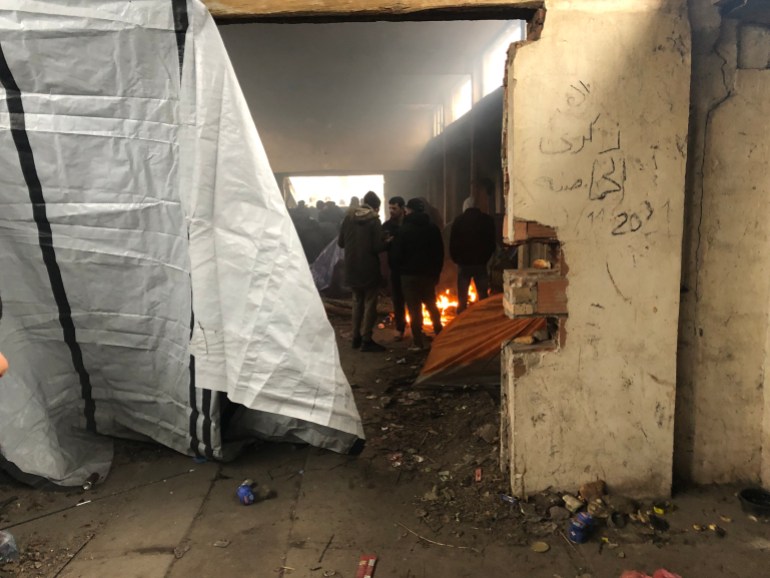
The vast majority were men, but occasionally one could hear the cries of a baby from behind a tarpaulin that someone had hung up in one corner to provide a small measure of privacy for the women and children.
The few NGOs that operate in the border region provide only limited help, and the asylum seekers are largely left to fend for themselves.
In Majdan, they are given only drinking water and the use of a generator once a week.
“What we need most here is food,” says Abdullah, a white-haired man in his fifties from Aleppo. “There is only one store in the village, and they charge us three times as much, because we are refugees. And we need firewood. It is just so cold. Why does nobody help us here?”
Treated ‘like animals’
Most of the refugees Al Jazeera interviewed in the border region have made several attempts to enter Hungary – one man claims he has tried 50 times – but on each occasion they were apprehended by the authorities, often violently, and returned to Serbia.
“The Hungarian police treat us like animals. Maybe half the people here have been beaten by them,” says Abdullah, looking around the factory.
Many of the stories begin in the same way. After crossing the border, the asylum seekers are stopped by gun- and baton-wielding police officers dressed in black and wearing face masks.
Sometimes they simply take the refugees back to the Serbian border, and on some occasions – as in the case of Adel – they beat them brutally and steal or destroy their belongings.
Some of the pushbacks and the accompanying violence have been documented carefully by the Border Violence Monitoring Network, a group of NGOs that operate in the Balkans.
A frequent contributor is András Léderer, the head of advocacy for the Hungarian Helsinki Committee (HHC), a human rights organisation that provides free legal assistance to refugees in Hungary.
“Head injuries, broken limbs, broken hands, the use of batons, the use of dogs. All are fairly commonplace during these pushbacks,” Léderer told InfoMigrants, a news and information site for migrants, in 2021.
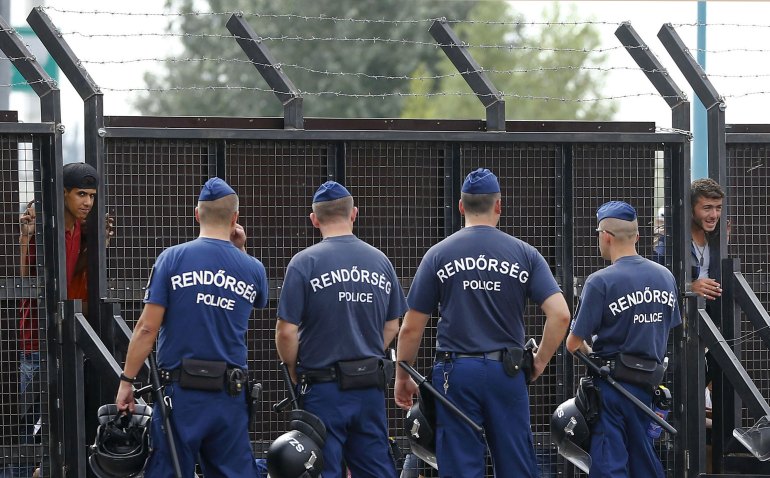
The Hungarian police dispute these accounts, claiming that it is the asylum seekers themselves who are violent.
“Illegal migrants are becoming increasingly violent and determined in attempting to enter Hungary. Lately, they have attacked police officers and soldiers on several occasions,” a spokesman for the Hungarian National Police Headquarters Communication Service wrote in an email to Al Jazeera.
“The police firmly rejects all unfounded claims stating that police officers on duty assault illegal migrants,” he said.
“Police measures are carried out in line with the principles of legality, professionalism, and proportionality, by paying special attention to a humane approach towards illegal immigrants that respects their human dignity,” he said.
Violent pushback
One victim of a violent Hungarian pushback is Mohamed, a 20-year-old from Afghanistan, whose hand is covered in bandages.
He was stopped by four policemen thirty minutes after crossing the border in December.
“They made us lie on the ground,” he says. “They kicked and punched us. They were smiling and laughing as they beat us. We were crying and they were laughing. They tried to hit me in the head with their batons, but I held up my hand to protect my face.”
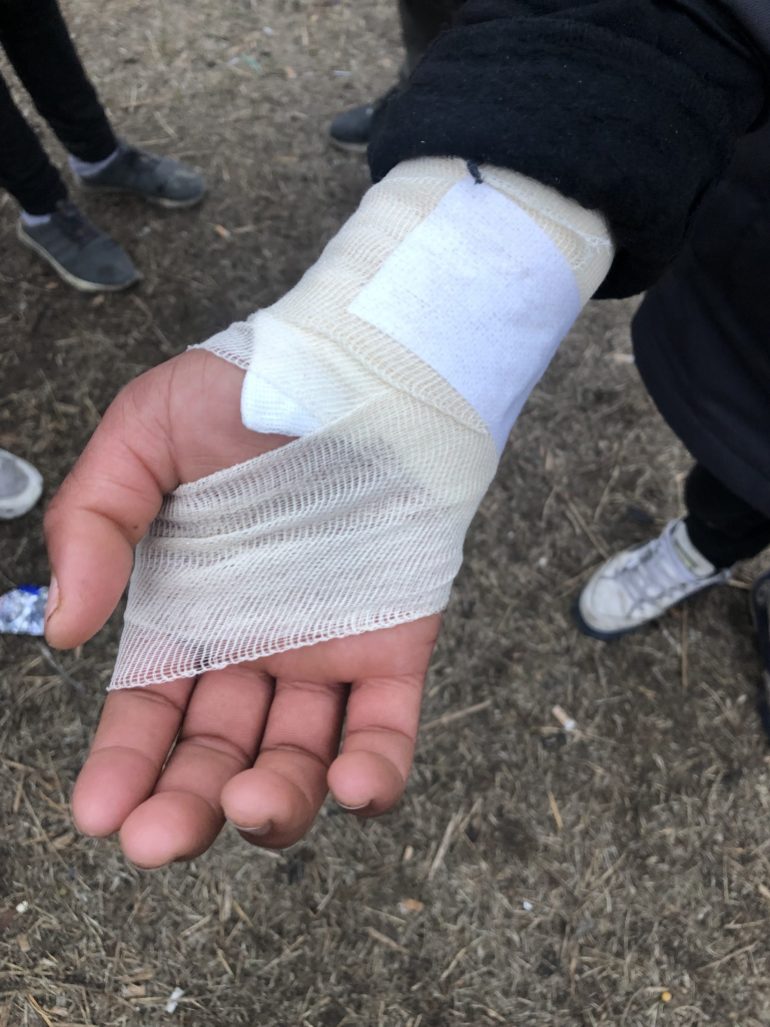
On December 17, 2020, about a year before Mohamed’s beating, the highest court of the European Union, the European Court of Justice, ruled that Hungary’s pushbacks of refugees to Serbia is a violation of EU law.
Although the judgment is legally binding, Léderer says the government has ignored it.
“Despite the rulings … that the well-documented often violent push-backs are unlawful, there is no indication that the Hungarian government or its authorities would implement these judgments,” he told Al Jazeera.
In fact, according to statistics that the Hungarian police publishes on its website, the number of pushbacks has nearly tripled in the year since the EU ruling.
‘I am not a criminal’
Mohammad, a middle-aged Tunisian man, is sitting next to Adel in front of the medical student, his crutches resting on the ground.
He was deported to Tunisia after having spent years in Italy, and he still has a son there, whom he has not seen since 2014.
“That’s all I want,” he says. “To see my son. I fight for him.”
“The police ran me over with their car last month,” he explains.
“I asked them for an ambulance, but they refused. I understand if they want to stop me, but why did they have to break my leg? I am not a criminal.”